Reading for IELTS Academic Practice Test- 13 | Reading Practice Tests for IELTS Academic PDF Download
Section - 1

(A) Bondi Beach, Australia’s most famous beach, is located in the suburb of Bondi, in the Local Government Area of Waverley, seven kilometers from the centre of Sydney. "Bondi" or "Boondi" is an Aboriginal word meaning water breaking over rocks or the sound of breaking waves. The Australian Museum records that Bondi means place where a flight of nullas took place. There are Aboriginal Rock carvings on the northern end of the beach at Ben Buckler and south of Bondi Beach near McKenzies Beach on die coastal walk.
(B) The indigenous people of the area at the time of European settlement have generally been welcomed to as the Sydney people or the Eora (Eora means "the people"). One theory describes the Eora as a sub-group of the Darug language group which occupied the Cumberland Plain west to the Blue Mountains. However, another theory suggests that they were a distinct language group of then own. There is no clear evidence for the name or names of the particular band(s) of the Eora that roamed what is now the Waverley area, A number of place names within Waverley, most famously Bondi, have been based on words derived from Aboriginal languages of the Sydney region.
(C) From the mid-1800s Bondi Beach was a favourite location for family outings and picnics. The beginnings of the suburb go back to 1809, when the early road builder, William Roberts, received from Governor Bligh a grant of 81 hectares of what is now most of the business and residential area of Bondi Beach. In 1851, Edward Smith Hall and Francis O'Brien purchased 200 acres of the Bondi area that embraced almost the whole frontage of Bondi Beach, and it was named the "The Bondi Estate." Between 1855 and 1877 O'Brien purchased Hall's share of the land, renamed the land the "O'Brien Estate," and made the beach and the surrounding land available to the public as a picnic ground and amusement resort. As the beach became increasingly popular, O'Brien threatened to stop public beach access. However, die Municipal Council believed that the Government needed to intervene to make the beach a public reserve.
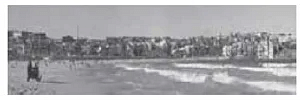
(D) During the 1900s beach became associated with health, leisure and democracy - a playground everyone could enjoy equally. Bondi Beach was a working class suburb throughout most of the twentieth century with migrant people from New Zealand comprising the majority of the local population. The first tramway reached the beach in 1884. Following this, tram became the first public transportation in Bondi-As an alternative, this action changed die rule that only rich people can enjoy the beach-By the 1930s Bondi was drawing not only local visitors but also people from elsewhere in Australia and overseas. Advertising at the time referred to Bondi Beach as the "Playground of the Pacific".
(E) There is a growing trend that people prefer having relax near seaside instead of living unhealthily in cities. The increasing popularity of sea bathing during the late 1800s and early 1900s raised concerns about public safety and how to prevent people from drowning. In response, the world's first formally documented surf lifesaving club, the Bondi Surf Bathers' life Saving Club, was formed in 1907. This was powerfully reinforced by the dramatic events of "Black Sunday" at Bondi in 1938. Some 35,000 people were on the beach and a large group of life savers were about to start a surf race when three freak waves hit the beach, sweeping hundreds of people out to sea. Lifesavers rescued 300 people. The largest mass rescue in the history of surf bathing, it confirmed the place of the life saver ỉ n the national imagination.
(F) Bondi Beach Is the end point of the City to Surf Fun Run which is held each year in August Australian surf carnivals further instilled this image. A Royal Surf Carnival was held at Bondi Beach for the Queen Elizabeth n during her first visited in Australia, in 1954. Since 1867, there have been over fifty visits by a member of the British Royal Family to Australia. In addition to many activities, the Bondi Beach Markets is open every Sunday. Many wealthy people spend Christmas Day at the beach. However, the shortage of houses occurs when lots of people crushed to seaside. Manly is the seashore town which solved this problem. However, people still choose Bondi as the satisfied destination rather than Manly.
(G) Bondi Beach has a commercial area along Campbell Parade and adjacent side streets, featuring many popular cafes, restaurants, and hotels, with views of the contemporary beach. It is depicted as wholly modem and European. In the last decade, Bondi Beaches' unique position has Been a dramatic rise in svelte houses and apartments to take advantage of the views and scent of the sea. The valley naming down to the beach is famous world over for its view of distinctive red tiled roofs. Those architectures are deeply influenced by British costal town.
(H) Bondi Beach hosted the beach volleyball competition at the 2000 Summer Olympics. A temporary 10,000-seat stadium, a much smaller stadium, 2 warmup courts, and 3 training courts were set up to host the tournament. The Bondi Beach Volleyball Stadium was constructed for it and stood for just six weeks. Campaigners oppose both the social and environmental consequences of the development. The stadium will divide the beach in two and seriously restrict public access for swimming, walking, and other forms of outdoor recreation. People protest for their human rights of having a pure seaside and argue for health life in Bondi.
(I) "They're prepared to risk lives and risk the Bondi beach environment for the sake of eight days of volleyball", said Stephen Uniacke, a construction lawyer involved in the campaign. Other environmental concerns include the possibility that soil dredged up from below the sand will acidify when brought to the surface.
Questions 1-5: Do the following statements agree with the information given in Reading Passage 1? In boxes 1-5 on your answer sheet, write Q.1. The name of the Bondi beach is first called by the British settlers.
Q.1. The name of the Bondi beach is first called by the British settlers.
Q.2. The aboriginal culture in Australia is different when compared with European culture.
Q.3. Bondi beach area holds many contemporary hotels
Q.4. The seaside town in Bondi is affected by British culture for its characteristic red color.
Q.5. Living near Bondi seashore is not beneficial for health.
Questions 6-9: Answer the questions below using NO MORE THAN TWO WORDS AND/OR NUMBERS from the passage for each answer.
Write your answers in boxes 6-9 on your answer sheet 6 At the end of 19th century, which public transport did people use to go to bondi?
Q.7. When did the British Royalty first visit Bondi?
Q.8. Which Olympic event did Bondi hold in 2000 Sydney Olympic games?
Q.9. What would be damaged if the stadium was built for that Olympic event?
Questions 10-13: Complete the following summary of the paragraphs of Reading Passage, using no more than two words from the Reading Passage for each answer. Write your answers in boxes 10-13 on your answer sheet.
Bondi beach holds the feature sport activities every year, which attracts lot of_____10_____choosing to live at this place during holidays. But local accommodation cannot meet with the expanding population, a nearby town of_____11_____is the first suburb site to support the solution, yet people prefer_____12_____as their best choice. Its seaside buildings are well-known in the world for the special scenic colored_____13_____on buildings and the joyful smell from the sea.
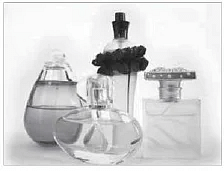
Section - 2

(A) Ever since the unguentari plied their trade in ancient Rome, perfumers have to keep abreast of changing fashions. These days they have several thousand ingredients to choose from when creating new scents, but there is always demand for new combinations. The bigger the "palette7 of smells, the better the perfumer's chance of creating something fresh and appealing. Even with everyday products such as shampoo and soap, kitchen cleaners and washing powders, consumers are becoming increasingly fussy. And many of today's fragrances have to survive tougher treatment than ever before, resisting the destructive power of bleach or a high temperature wash cycle. Chemists can create new smells from synthetic molecules, and a growing number of the odours on the perfumer's palette are artificial. But nature has been in the business far longer.
(B) The island of Madagascar is an evolutionary hot spot; 85% of its plants are unique, making it an ideal source for novel fragrances. Last October, Quest International, a company that develops fragrances for everything from the most delicate perfumes to cleaning products, sent an expedition to Madagascar in pursuit of some of nature's most novel fragrances. With some simple technology, borrowed from the pollution monitoring industry, and a fair amount of ingenuity, the perfume hunters bagged 20 promising new aromas in the Madagascan rainforest. Each day the team set out from their "hotel"—a wooden hut lit by kerosene lamps, and trailed up and down paths and animal tracks, exploring the thick vegetation up to 10 meters on either side of the trail. Some smells came from obvious places, often big showy flowers within easy reach-Others were harder to pin down. "Often it was the very small flowers that were much more interesting, says Clery. After the luxuriance of the rainforest, the little-known island of Nosy Hara was a stark, dry place geologically and biologically very different from the mainland, "Apart from two beaches, the rest of the Island Is impenetrable, except by hacking through the bush, says Clery. One of the biggest prizes here was a sweetsmelling sap weeping from the gnarled branches of some ancient shrubby trees in the parched Interior. So far no one has been able to identify the plant.
(C) With most flowers or fruits, the hunters used a technique originally designed to trap and identify air pollutants. The technique itself is relatively simple. A glass bell jar or flask Ỉ S fitted over the flower. The fragrance molecules are trapped in this “headspace” and can be extracted by pumping the air out over a series of filters which absorb different types of volatile molecules. Back home in the laboratory, the molecules are flushed out of the filters and injected into a gas chromatograph for analysis. If it Is Impossible to attach the headspace gear, hunters fix an absorbent probe close to the source of the smell. The probe looks something like a hypodermic syringe, except that the 'needle' is made of silicone rubber which soaks up molecules from the air. After a few hours, the hunters retract the rubber needle and seal the tube, keeping the odour molecules inside until they can.be injected into the gas chromatograph in the laboratory.
(D) Some of the most promising fragrances were those given, off by resins that oozed from the bark of trees. Resins are the source of many traditional perfumes, including frankincense and myrrh. The most exciting resin came from a Calophyllum tree, which produces a strongly scented medicinal oil. The sap of this Calophyllum smelt rich and aromatic, a little like church incense. But It also smelt of something the fragrance industry has learnt to live without castoreum a substance extracted from the musk glands of beavers and once a key ingredient in many perfumes. The company does not use animal products any longer, but à was wonderful to find a tree with an animal smell.
(E) The group also set out from the island to capture the smell of coral reefs. Odors that conjure up sun kissed seas are highly sought after by the perfume industry. "From the ocean, the only thing we have is seaweed, and that has a dark and heavy aroma. We hope to find something unique among the corals," says Dir. The challenge for the hunters was to extract a smell from water rather than air. This was an opportunity to try Clery's new "aquaspace" apparatus a set of filters that work underwater. On Nosy Hara, jars were fixed over knobs of coral about 2 meters down and water pumped out over the absorbent filters. So what does coral smell like? "It's a bit like lobster and crab," says Clery. The team's task now is to recreate the best of then captured smells. First they must identify the molecules that make up each fragrance. Some ingredients may be quite common chemicals. But some may be completely novel, or they may be too complex or expensive to make in the lab. The challenge then is to conjure up the fragrances with more readily available materials. "We can avoid the need to import plants from the rainforest by creating the smell with a different set of chemicals from those in the original material," says Clery. "If we get it right, you can sniff the sample and it will transport you straight back to the moment you smelt it in the rainforest."
Questions 14-19: The reading passage has seven paragraphs A-E
Which paragraphs contains the following details Write the correct number, A-E, in boxes 14-18 on your answer sheet.
NB You may use any letter more than once.
Q.14. One currently preferred spot to pick up plants for novel finding
Q.15. A new task seems to be promising yet producing limited finding in fragrance source
Q.16. The demanding conditions for fragrance to endure.
Q.17. A substitute for substance no longer available to the perfume manufacture
Q.18. Description of an outdoor expedition on land chasing new fragrances.
Questions 19-23: Do the following statements agree with the information given in Reading Passage 2? In boxes 19-23 on your answer sheet, write
Q.19. Manufacturers can choose to use synthetic odours for the perfume nowadays.
Q.20. Madagascar is chosen to be a place for hunting plants which are rare in other parts of the world.
Q.21. Capturing the smell is one of the most important things for creating new aromas.
Q.22. The technique the hunters used to trap fragrance molecules is totally out of their ; ingenuity.
Q.23. Most customers prefer the perfume made of substance extracted from the musk I glands of animals.
Questions 24-26: Filling the blanks and answer the questions below with only one word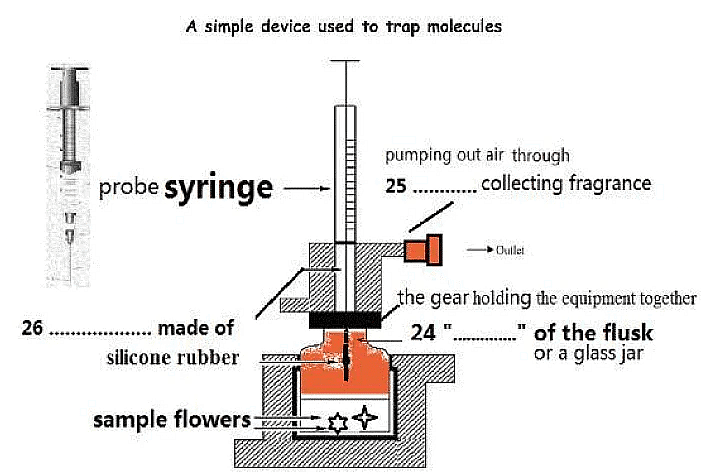
Section - 3
The Exploration of Mars
(A) In 1877, Giovanni Schiaparelli, an Italian astronomer, made drawings and maps of the Martian surface that suggested strange features. The images from telescopes at this time were not as sharp as today's. Schiaparelli said he could see a network of lines, or canali. In 1894, an American astronomer, Percival Lowell, made a series of observations of Mars from his own observations of Mars from his own observatory at Flagstaff, Arizona, USA. Lowell was convinced a great network of canals had been dug to irrigate crops for the Martian race! He suggested that each canal had fertile vegetation on either side, making them noticeable from Earth. Drawings and globes he made show a network of canals and oases all over the planet.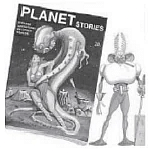
(B) The idea that there was intelligent life on Mars gained strength in the late 19th century. In 1898, H.G. Wells wrote a science fiction classic, The War of the Worlds about an invading force of Martians who try to conquer Earth. They use highly advanced technology (advanced for 1898) to crush human resistance in their path. In 1917, Edgar Rice Burroughs wrote the first in a series of 11 novels about Mars. Strange beings and rampaging Martian monsters gripped the public's imagination. A radio broadcast by Orson Welles on Halloween night in 1938 of The War of the Worlds caused widespread panic across America. People ran into the streets in their pyjamas-millions believed the dramatic reports of a Martian invasion.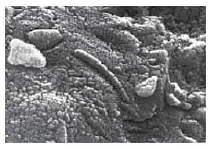 (C) Probes are very important to our understanding of other planets. Much of our recent knowledge comes from these robotic missions into space. The first images sent back from Mars came from Mariner 4 in July 1965. They showed a cratered and barren landscape, more like the surface of our moon than Earth. In 1969, Mariners 6 and 7 were launched and took 200 photographs of Mars's southern hemisphere and pole on fly-by missions. But these showed little more information. In 1971, Mariner 9's mission was to orbit the planet every 12 hours. In 1975, The USA sent two Viking probes to the planet, each with a lander and an orbiter. The Landers had sampler arms to scoop up Maritain rocks and did experiments to try and find signs of life. Although no life was found, they sent back the first colour pictures of the planet’s surface and atmosphere from pivoting cameras.
(C) Probes are very important to our understanding of other planets. Much of our recent knowledge comes from these robotic missions into space. The first images sent back from Mars came from Mariner 4 in July 1965. They showed a cratered and barren landscape, more like the surface of our moon than Earth. In 1969, Mariners 6 and 7 were launched and took 200 photographs of Mars's southern hemisphere and pole on fly-by missions. But these showed little more information. In 1971, Mariner 9's mission was to orbit the planet every 12 hours. In 1975, The USA sent two Viking probes to the planet, each with a lander and an orbiter. The Landers had sampler arms to scoop up Maritain rocks and did experiments to try and find signs of life. Although no life was found, they sent back the first colour pictures of the planet’s surface and atmosphere from pivoting cameras.
(D) The Martian meteorite found in Earth aroused doubts to the above analysis. ALH84001 meteorite was discovered in December 1984 in Antarctica, by members of the ANSMET project; The sample was ejected from Mars about 17 million years ago and spent 11,000 years in or on the Antarctic ice sheets. Composition analysis by NASA revealed a kind of magnetite that on Earth, is only found in association with certain microorganisms. Some structures resembling the mineralized casts of terrestrial bacteria and their appendages fibrils or by-products occur in the rims of carbonate globules and pre-terrestrial aqueous alteration regions. The size and shape of the objects is consistent with Earthly fossilized nanobacteria but the existence of nanobacteria itself is still controversial.
(E) In 1965, the Mariner 4 probe discovered that Mars had no global magnetic field that would protect the planet from potentially life-threatening cosmic radiation and solar radiation; observations made in the late 1990s by the Mars Global Surveyor confirmed this discovery. Scientists speculate that the lack of magnetic shielding helped the solar wind blow away much of Mars's atmosphere over the course of several billion years. After mapping cosmic radiation levels at various depths on Mars, researchers have concluded that any life within the first several meters of the planet's surface would be killed by lethal doses of cosmic radiation. In 2007, it was calculated that DNA and RNA damage by cosmic radiation would limit life on Mars to depths greater than 7.5 metres below the planet's surface. Therefore, the best potential locations for discovering life on Mars may be at subsurface environments that have not been studied yet. Disappearance of the magnetic field may played an significant role in the process of Martian climate change. According to the valuation of the scientists, the climate of Mars gradually transits from warm and wet to cold and dry after magnetic field vanished.
(F) NASA's recent missions have focused on another question: whether Mars held lakes or oceans of liquid water on its surface in the ancient past. Scientists have found hematite, a mineral that forms in the presence of water. Thus, the mission of the Mars Exploration Rovers of 2004 was not to look for present or past life, but for evidence of liquid water on the surface of Mars in the planet's ancient past. Liquid water, necessary for Earth life and for metabolism as generally conducted by species on Earth, cannot exist on the surface of Mars under its present low atmospheric pressure and temperature, except at the lowest shaded elevations for short periods and liquid water does not appear at the surface itself. In March 2004, NASA announced that its rover Opportunity had discovered evidence that Mars was, in the ancient past, a wet planet. This had raised hopes that evidence of past life might be found on the planet today. ESA confirmed that the Mars Express orbiter had directly detected huge reserves of water ice at Mars’ south pole in January 2004.
(G) Researchers from the Center of Astrobiology (Spain) and the Catholic University of the North in Chile have found an ‘oasis’ of microorganisms two meters below the surface of the Atacama Desert, SOLID, a detector for signs of life which could be used in environments similar to subsoil on Mars. “We have named it a ‘microbial oasis’ because we found microorganisms developing in a habitat that was rich in rock salt and other highly hygroscopic compounds that absorb water” explained Victor Parro, researcher from the Center of Astrobiology in Spain. “If there are similar microbes on Mars or remains in similar conditions to the ones we have found in Atacama, we could detect them with instruments like SOLID” Parro highlighted.

(H) Even more intriguing, however, is the alternative scenario by Spanish scientists: If those samples could be found to that use DNA, as Earthly life does, as their genetic code. It is extremely unlikely that such a highly specialised, complex molecule like DNA could have evolved separately on the two planets, indicating that there must be a common origin for Martian and Earthly life. Life based on DNA first appeared on Mars and then spread to Earth, where it then evolved into the myriad forms of plants and creatures that exist today. If this was found to be the case, we would have to face the logical conclusion: we are all Martian. If not, we would continue to search the life of signs.
Questions 27-32: The reading Passage has seven paragraphs A-H.
Which paragraph contains the following information?
Write the correct letter A-H, in boxes 27-32 on your answer sheet.
Q.27. Martian evidence on Earth
Q.28. Mars and Earth may share the same life origin
Q.29. certain agricultural construction was depicted specifically
Q.30. the project which aims to identify life under similar condition of Mars
Q.31. Mars had experienced terrifying climate transformation
Q.32. Attempts in scientific investigation to find liquid water
Questions 33-36 Choose the correct letter, A, B, c or D. Write your answers in boxes 33-36 on your answer sheet.
Q.33. How did Percival Lowell describe Mars in this passage?
(a) Perfect observation location is in Arizona.
(b) Canals of Mars are broader than that of the earth,
(c) Dedicated water and agriculture trace is similar to the earth.
(d) Actively moving Martian lives are found by observation.
Q.34. How did people change their point of view towards Mars from 19th century?
(a) They experienced Martian attack.
(b) They learned knowledge of mars through some literature works.
(c) They learned new concept by listening famous radio program.
(d) They attended lectures given by famous writers.
Q.35. In 1960s, which information is correct about Mars by a number of Probes sent to the space?
(a) It has a landscape full of rock and river
(b) It was not as vivid as the earth
(c) It contained the same substance as in the moon
(d) It had different images from the following probes
Q.36. What is the implication of project proceeded by technology called SOLID in Atacama Desert?
(a) It could be employed to explore organisms under Martian condition.
(b) This technology could NOT be used to identify life on similar condition of Mars.
(c) Atacama Desert is the only place that has a suitable environment for organisms.
(d) Life had not yet been found yet in Atacama Desert.
Questions 37-40 Do the following statements agree with the information given in Reading Passage 1?
In boxes 37-40 on your answer sheet, write TRUE if the statement is true FALSE if the statement is false NOT GIVEN if the information is not given in the passage
Q.37. Technology of Martian creature was superior than what human had at that time in every field according to The War of the Worlds.
Q.38. Proof sent by Viking probes has not been challenged yet.
Q.39. Analysis on meteorite from Mars found a substance which is connected to some germs.
Q.40. According to Victor Parro, their project will be deployed on Mars after they identified DNA substance on earth.
Answers
Section - A

Section - B
 Section - C
Section - C


|
Explore Courses for IELTS exam
|

|
















